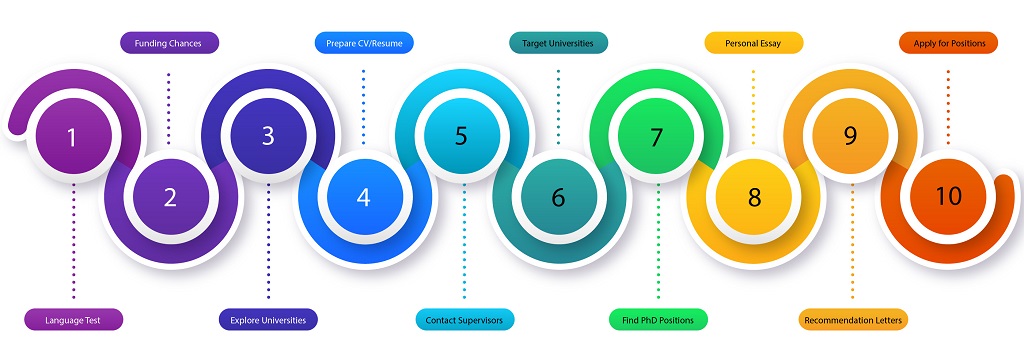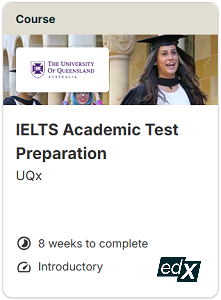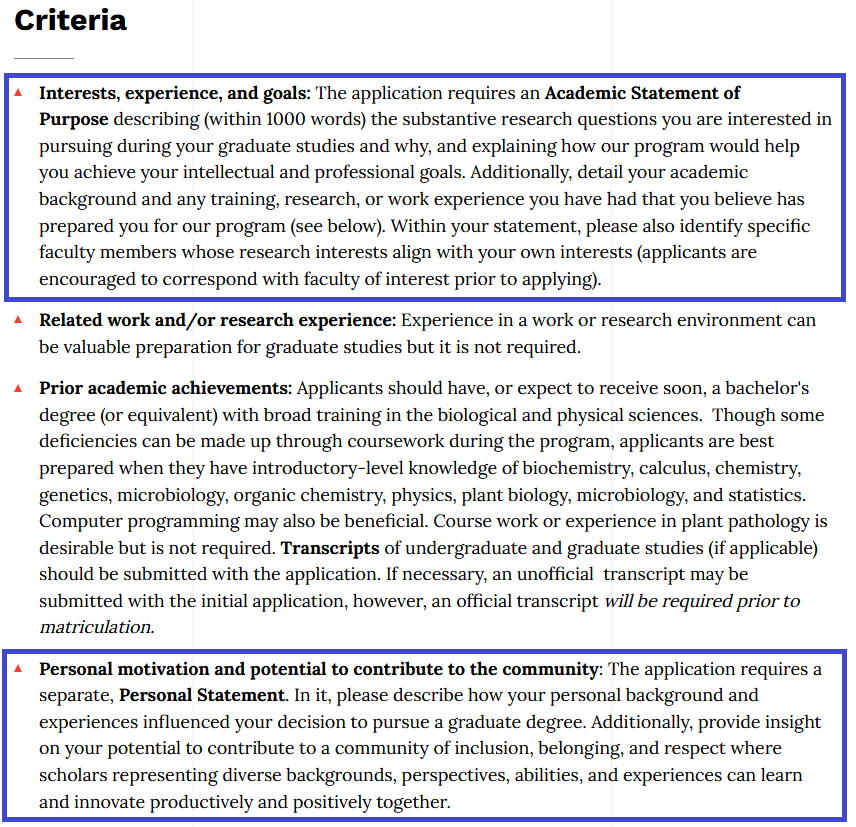
Nowadays, the number of applicants looking for PhD positions is increasing dramatically. Among them, fully funded PhD positions are the most favorable. Some of the frequently searched phrases on search engines are “fully funded PhD scholarships in Australia”, “fully funded PhD in UK for British students”, and “fully funded PhD in USA for international students”. Compared to the master’s applicants, PhD applicants have a higher chance of winning financial support. Supervisors, universities, and industrial sectors dedicate most funding sources (ca. 90%) to PhD vacancies. Herein, we share a general 10-step roadmap for the application process from the first steps to securing a fully funded PhD position. We will also mention how the Applyindex tools can streamline the process for you.
What is a Fully Funded PhD?
A Doctor of Philosophy (PhD) represents the pinnacle of academic achievement in the world. This prestigious qualification usually centers around a rigorous research-based endeavor, where candidates delve into the realms of original and substantial contributions to their chosen field. A cornerstone of this journey is writing a dissertation, often spanning up to 100-300 pages, which must undergo a rigorous defense during an oral examination before a panel of esteemed experts in the chosen field. The journey towards a degree typically unfolds over a specific time frame (3 to 6 years full-time), depending on the host country where you find a PhD. When a financial source funds the entire journey, it is a “fully funded PhD”.
Traditional Pathway to Get a Fully Funded PhD
The PhD application process can often be unfamiliar, chaotic, overwhelming and confusing, so most students do not know where to begin. Namely, the process is divided into 10+ steps with each step covering a major part of the application process. Of course, these steps will differ slightly for every case, depending on various parameters such as degree level and the countries students apply to. This traditional method is inefficient, time-consuming, and filled with uncertainty. These steps are often spread across different platforms, making the process complex and overwhelming, like a “chaos” or “disaster”! For instance, most PhD applicants typically go through the following steps:

Recently, platforms like Applyindex have emerged to help you throughout your journey in securing fully funded PhD positions. Read the article “How Applyindex tools work for applicants” for details. Let’s walk you through our recommended 10-step roadmap towards winning fully funded PhD positions.
Step 1. Prepare for Language Proficiency Tests
Depending on the country and the field you intend to apply, you might need to take English, French, German, etc. language proficiency tests. However, most universities require English test scores from PhD applicants. Unless you are excepted from taking and English text (when you are a citizen of native English-speaking countries or you have recently completed a university degree in English), international students must take an English proficiency test (e.g., IELTS Academic, TOEFL iBT, PTE Academic, and Duolingo). American and Canadian universities may ask for additional English qualifications such as GRE or GMAT, and it will depend on the student’s field of study. This step can be extended till you submit your application officially.
Step 2. Which Universities are Suitable for Your CV?
The second step for any student applying to universities is understanding where their CV strength can take them, especially when seeking a fully funded PhD. It is crucial to know which university ranking range is suitable for your CV to win a fully funded PhD. For example, if someone has a bachelor’s GPA of 3 out of 4 with an IELTS score of 6, they should not apply to Harvard University in the US or the University of Oxford in the UK because they do not meet their minimum requirements.
Traditionally, evaluating the strength of your CV involves comparing it with those of previously successful applicants, browsing platforms like GradCafe for basic credentials of admitted and rejected candidates, searching university websites for minimum requirements, consulting student agencies, or seeking advice from social media bloggers. However, this approach is often tedious and prone to errors. This is where the concept of the a-index vs CV strength evaluation comes in! We strongly recommend focusing on universities where our AI suggests your a-index has at least a 60% chance of securing fully funded PhD positions. Read the article “How Applyindex tools work for applicants” for details.
Step 3. Explore Universities
Now that you know the ranking range of universities to focus on from Step 2, it is time to gather the necessary information about universities’ admission requirements, their academics, and positions for your application process. It is crucial for all applicants to thoroughly explore universities before applying for fully funded PhDs. Understanding key details like minimum GPA requirements, language proficiency test scores, the number of required recommendation letters, and application fees is essential for a successful application process. Additionally, knowing whether you need to contact potential supervisors before submitting a formal application or after receiving an admission offer can significantly impact your application strategy.
Limiting Parameters in the Application Process
Several factors can act as limiting parameters when applying to universities, targeting fully funded PhD positions. These include the number of recommendation letters required by each university, your budget for application fees, and the cost of sending official English test results. If any of these are insufficient, it can significantly reduce the number of universities you can apply to. Applicants often overlook these factors until they’ve started the application process, only to find their options constrained. Let’s explore some practical examples to illustrate how these limitations work:
Example 1: Recommendation Letter Constraints
Suppose you plan to apply to North American universities, which typically require 3 recommendation letters for PhD applications. However, your recommenders have told you they are willing to provide letters of reference only for 3 applications. This means that even if you have the financial resources to apply to multiple universities, you’re restricted to only 3 applications because of the recommendation letter limit.
Example 2: Insufficient Recommenders
You want to apply to North American universities, but you only have 2 people who are available to write your recommendation letters. Since most North American institutions require 3 letters, you would not meet their minimum criteria. As a result, you’ll need to focus your efforts on applying to European universities, which generally require only 2 recommendation letters for PhD applications.
Example 3: Financial Constraints
In another scenario, you have enough recommenders willing to write as many letters as you need. However, your budget for application fees and sending formal English test scores is limited. North American universities often charge high application fees (~80 USD) and require official test scores, which can add up quickly. Given these financial constraints, you may find it more feasible to apply to European universities, as many of them do not charge application fees or require formal test results during PhD application processes.
Up-to-Date Information
A key challenge in the application process is staying up-to-date with each university’s specific requirements. While third-party websites and external sources may provide information on application fees, deadlines, and eligibility criteria, these details can change frequently and may not always be accurate. Relying on outdated or incorrect information can waste time and money. Therefore, it is critical to always verify application details directly on the official university websites. This includes checking for changes in fees and deadlines, and whether contacting a supervisor is required. Universities regularly update their policies from one year to the next, and staying informed will help ensure your application is complete and timely. Let’s look at two examples of what we mean by exploring universities:
Example 1: What are Language Proficiency Requirements for TA-funded positions?
PhD funding through a teaching assistantship (TA) is typically seen for a PhD in USA and a PhD in Canada. Generally, a high IELTS Academic score is at least 7, with a minimum of 7.5 in the speaking section (Note: To see how IELTS compares to other English language tests, explore TOEFL and PTE). Suppose your English test scores, particularly in the overall and speaking sections, are high. In that case, you should apply directly to departments offering TA funding instead of contacting supervisors (who offer PhD funding through research assistantships (RA)) at American and Canadian universities.
Thus, you can skip contacting supervisors (see step 5 below) in this case. However, remember that focusing solely on TA-backed positions limits your chances of securing fully funded PhD opportunities, as you would be excluding RA-funded positions. If your publication record (number and quality) and English proficiency are strong, you can secure both TA and RA funding for a PhD.
Example 2: Should I Contact Supervisors Before Applying for RA-fully funded PhD Positions?
Note that different terms are used for RA funding in various countries. For example, it is called RA funding in the USA and Canada, scholarship in Australia and Finland, and studentship in the UK. Let’s explore different scenarios:
Applying for Individual PhDs (also called PhD Research Projects)?
These types of fully funded PhD positions are typically offered by European research institutes in countries such as Germany, the Netherlands, France, Belgium, Switzerland, and others. Unlike program-based applications, each PhD research project often has its own application process. In some cases, you may simply need to email your application package directly to the hiring supervisor, without filling out any online forms. These applications are generally shorter and easier to complete than those required for program-based admissions. While it is not mandatory to contact the hiring supervisor, we highly recommend doing so. Reaching out helps make your name and résumé more memorable and allows you to leave a strong impression through your email.
Applying for PhD programs with RA funding?
You can apply for PhD programs with RA funding in the USA, Canada, Australia, France, Germany, the Netherlands, Italy, etc., through departmental application forms. It is common practice among applicants to find a supervisor in this process to find out if they have available positions in their research group. After contacting supervisors and receiving feedback, you can decide which universities to finally apply to. Typically, students with a strong publication record follow this path for their university application process. This is especially true if they don’t have a high enough English test score for TA funding, as they hope their strong publication track record can secure RA funding.
PhD Programs in the USA and Canada
Some universities in the USA and Canada provide specific guidelines about this step. For instance, the Department of Chemical and Materials Engineering at the University of Alberta explicitly states that you do NOT need to secure or find a supervisor before submitting your application (see the screenshot below). Therefore, contacting supervisors can vary depending on university and departmental policies. You may need to:
- Find a supervisor before applying to programs.
- Find a supervisor after applying to programs.
- Not contact supervisors at all.
PhD Programs in Australia and Europe
Just so you know, in 95% of cases, contacting supervisors is mandatory when applying for PhDs in Australia, PhDs in UK, PhDs in France, PhDs in Germany, or PhDs in Netherlands. Failure to find a PhD supervisor will prevent you from submitting your PhD application. While most PhD applicants mistakenly believe that most PhD positions in Europe are pre-defined research projects, PhD programs are widespread. Some research centers and institutes in Europe also offer fully funded PhD programs. For example, the German Cancer Research Center provides numerous vacancies annually for its PhD program.
Applyindex offers you tools to conveniently take notes about each university and save them directly on their Applyindex profile. Read the article “How Applyindex tools work for applicants” for details.
Step 4. Prepare a Well-Crafted CV
After gathering information from exploring targeted universities in the range obtained from step 3, preparing a Word or PDF resume file is next. It is an important application document, especially if you are applying for fully funded PhDs. You should craft a detailed CV with no more than three pages, while a maximum of two pages is optimal. To prepare your academic CV, you can get ideas from previous successful applicants’ samples, which is time-consuming. Alternatively, you may use platforms like LinkedIn, which provide a general CV format. However, Applyindex offers a more tailored approach with its automated, data-driven resume creator, specifically designed for academic purposes. Read the article “How Applyindex tools work for applicants” for details.

Step 5. Contact Supervisors For Fully Funded PhD Positions
Now that you have gathered the necessary information from universities and prepared your CV, it is time to contact research supervisors at the universities pinpointed in step 3, if you are applying for RA-fully funded PhD positions. You contact them to find out if there are any open positions within their research group. The purpose of this step is not to guarantee financial support but to find out if any positions are available. Responses you might expect to receive from a potential supervisor are:
- Thank you for your email. I am looking for a new PhD student in my group, however, you should apply directly to the department. Granting financial support is a decision made by a departmental committee.
- Thank you for your interest, but unfortunately, I do not have any open positions for this semester.
- I think that you have a strong CV. When are you free next week to have an interview?
With luck, supervisors might respond by offering the possibility of a fully funded PhD position. If supervisors who have funded PhD positions in Europe, the USA, or Australia are interested in the applicants’ CVs, they might invite the students for an online PhD interview via Zoom, Google Meet, or Microsoft Teams. Thus, students must prepare for the interviews to convince supervisors they are the best fit for the position.
Candidates can streamline their supervisor outreach using Applyindex’s comprehensive tools. From viewing detailed supervisor profiles to accessing information about active grants and research activities, our platform facilitates efficient connections. You can email supervisors directly, track your interactions, and organize important notes within our platform. It eliminates the need to juggle multiple websites and software such as Gmail, Gemini, and Excel. This streamlined approach saves you time and helps keep everything organized in one place. Read the article “How Applyindex tools work for applicants” for more details.

Step 6. Choose Target Universities
A set of target universities is essential before submitting formal applications. Many students waste money on application fees by applying blindly or inappropriately to numerous institutions and universities. We help you identify the right target universities for your application strategy. This decision is based on several factors, including:
- The availability and willingness of your recommenders, and the number of recommendation letters they can provide.
- Your chances of securing full PhD funding.
- The country and type of PhD position you apply for.
- The minimum requirements of the university and department.
- Your budget for application fees.
- Your budget for sending official language test results.
- Responses from potential research supervisors (if you have not skipped Step 5).
The Factors Affecting Your Target Universities
a-index
If you have decided to use Applyindex tools and features, be aware that the most important parameter is your a-index, a quantitative representation of your CV strength. The a-index measures how well your profile aligns with the difficulty level of universities offering fully funded PhD positions. As mentioned in step 2, we strongly recommend focusing on the university ranking range where your minimum chance of securing fully funded PhD positions is at least 60%.
Recommendation Letter
Scenario 1: Suppose you plan to apply to North American universities, which typically require 3 recommendation letters for PhD applications. However, your recommenders have told you they will provide letters of reference only for 3 applications. This means that even if you have the financial resources to apply to multiple universities, you are restricted to only 3 applications because of the recommendation letter limit.
Scenario 2: You want to apply to North American universities, but you only have 2 people who are available to write your recommendation letters. Since most North American institutions require 3 letters, you would not meet their minimum criteria. As a result, you will need to focus your efforts on applying to European universities, which generally require only 2 recommendation letters for PhD applications.

Budget
Depending on how much you can spend on universities’ application fees and language tests results sending fees, you are limited to the number of positions you apply to, especially in the USA and Canada. Imagine a scenario where you have enough recommendation letters but face budget constraints. North American universities often charge high application fees and require official test scores, which can increase costs. Given these financial limitations, (i) if you limit your applications to North American universities, potentially reducing your chances of admission offers, or (ii) you may find it more practical to apply to European universities, as many of them do not charge application fees or require formal test results during fully funded PhD application processes.
Feedback from Contacting Research Supervisors
The feedback and responses you receive from supervisors throughout Step 5 can significantly shape your application strategy and influence which target universities you should ultimately consider. By establishing early contact with potential supervisors, you can gain valuable insights into available fully funded PhD vacancies and whether your research interests align with theirs, which can help you make informed decisions when finalizing your university applications.
Step 7. Find Fully Funded PhD Positions
Remember that this step may overlap with steps 5 and 6, depending on the country or university you are applying for. So, you can work on these steps in parallel. PhD positions are generally available in the following three formats:
- PhD Programs: These include PhD programs in countries like the USA, the UK, Canada, Australia, Italy, and Poland. Typically, applying to these positions involves completing lengthy departmental application forms. Visiting university websites for program deadlines and minimum requirements is recommended for these positions.
- Individual PhDs (PhD Research Projects): Primarily found in European universities, these are PhD vacancies. Unlike programs, each research project often has its application form, or in some cases, you may simply need to email your application package directly to the hiring supervisor. These application forms are shorter and easier to complete compared to program-based applications.
PhD Scholarships or Grants: Explore opportunities like PhD Scholarships in Australia or the Marie Curie PhD Scholarship in Europe. Applications for these typically require submission through individual university websites.
Step 8. Prepare Personal Essay
Now that you’ve selected your target universities, you must prepare your Statement of Purpose (SOP) for their programs or positions. Please note that this document may go by different names depending on the country and university, such as a Statement of Interest (SOI), Personal Statement (PS), Motivation Letter (ML), Letter of Motivation (LOM), Cover Letter (CL), or Application Letter (AL). While these documents may vary slightly in length or the questions they address, their purpose is the same—they serve as a crucial part of your fully funded PhD application process. For simplicity, we will refer to all of them as SOP.
General Guide
SOP or SOI
- Purpose: Typically used for both master’s and PhD applications.
- Content: Focuses on your academic background, research interests, career goals, and why you are interested in the specific program or institution. It should be between 1,000 and 1,200 words, not exceeding two pages.
- Common in: American and Canadian universities, less common in European and Australian institutions.
PS
- Purpose: Widely used for both master’s and PhD applications.
- Content: Offers a broader view of your personal and academic background, life experiences, and how they relate to your chosen field or program in no more than one page.
- Common in: Commonly required in American, Canadian, and Australian universities, less common in European institutions.
ML or LOM
- Purpose: Typically asked by European universities for master’s, PhD, and postdoc applications.
- Content: Covers your motivation for pursuing the program, relevant qualifications, and how you fit into the program’s objectives in no more than one page.
- Common in: European universities, less common in American, Canadian, and Australian institutions.
CL or AL
- Purpose: Used more commonly for job applications (like postdoc positions) but can sometimes be requested for master’s and PhD admissions.
- Content: Typically addresses your qualifications, interest in the program, and why you’re a suitable candidate in no more than one page.
- Common in: Less common for graduate admissions, more often seen in job applications.
Specific Guide
Some universities have specific guidelines regarding the content and length of supporting documents. For instance, a few universities in the US and Canada might require an 800-word SOP and a 400-word PS, whereas European institutions often ask for a one-page LOM and a one-page CL. It is essential to closely follow the specific requirements of each university to ensure your application meets their expectations. For example, as shown in the screenshot below, the School of Integrative Plant Science at Cornell University requests both an SOP and a PS, each with detailed guidelines on structure and content. Paying attention to these precise instructions demonstrates your attention to detail and increases your chances of a successful application.
If you’d like to prepare your SOP, SOI, LOM, or CL on your own, many samples from applicants who have successfully secured fully funded PhD positions at the master’s and PhD levels are available in your Applyindex profile. These examples offer valuable guidance on how to effectively structure your document to stand out to get fully funded PhD vacancies. Each sample highlights key sections, ensuring your SOP, SOI, LOM, or CL is impactful.
Step 9. Secure Recommendation Letters
Now that you are one step closer to uploading your documents and submitting the application form, it is time to ask for your recommendation letters from your previous or current research supervisor(s), course lecturer(s), or employer(s). Note that a recommendation letter is also called a letter of recommendation (LOR), a reference letter, or a supporting letter. A well-crafted recommendation letter should be concise, usually 1-2 pages, and tailored to the specific PhD program, emphasizing the applicant’s strengths in a compelling and structured manner. Impactful and strong recommendation letters are your secret weapons to win a fully funded PhD position.
Step 10. Apply for Fully Funded PhD Positions
According to the supervisors’ final feedback, the number of required LORs, and your budget, you should prepare a list of targeted universities to which they will officially apply. Students must write a strong SOP to convince the admission committee of the department/university to which they are applying. After all the documents needed for the official application are ready, students go through the process and submit their applications. If required, students have to pay application fees before the application submission.

Last Words on Fully Funded PhD Positions
Once you receive an admission offer letter for a fully funded PhD position from a university, you should begin applying for a student visa. In summary, fully funded PhD positions are highly sought-after worldwide, with students often searching for opportunities in Europe, the USA, Canada, and Australia. Navigating the complex process to apply for fully funded PhD positions can be challenging. This article provides a 10-step roadmap to guide students from the initial stages to securing a fully funded PhD. While specifics may vary based on individual backgrounds and destinations, pursuing a fully funded PhD offers a rewarding academic and research journey.
Frequently Asked Questions (FAQs)
Do I always need to contact supervisors before applying for fully funded PhDs?
Not always. In the USA and Canada, it depends on whether you’re applying for RA- or TA-based fully funded PhD positions. In Australia, contacting a supervisor is usually mandatory. In Europe, project-based, fully funded PhD positions may or may not require supervisor contact, but doing so is often helpful.
What factors limit the number of PhD applications I can submit?
Your budget for application and test fees, the quantity of recommendation letters your referees are willing to provide, and the availability of recommenders are important limiting factors. These limitations may make it more difficult for you to apply widely, particularly to universities in North America.
What types of fully funded PhD positions can I apply for?
You can apply for (1) program-based PhDs (common in the USA, Australia, Canada) and (2) project-based PhDs (mainly in Europe).








Leave Your Comment